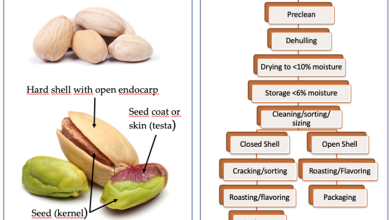Plant Ginger in your Garden: [Care, Irrigation and Substrate]
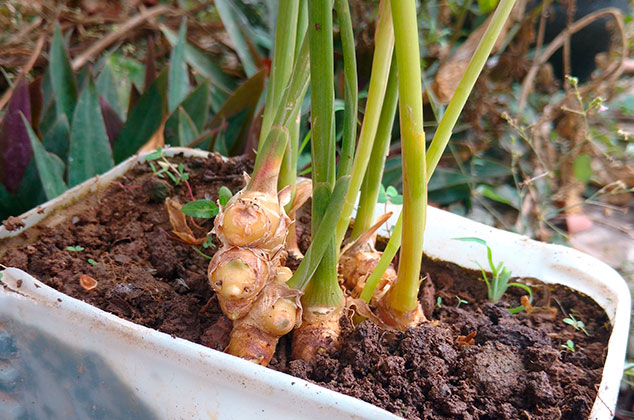
The Greeks ate ginger wrapped in bread totreat digestive problems.
Eventually, ginger was used as an ingredient in the famous bread that bears its name.
Also…
According to Ayurveda (or traditional Indian medicine), ginger is considered to bea universal drug and a medicinal tuber.
It is capable of relieving discomforts such as joint pain, dizziness, loss of appetite, indigestion and inflammation.
Important points to Plant Ginger:
- Where? It is a tropical plant that proliferates with the heat. It is not frost hardy, but does not tolerate direct sun either.
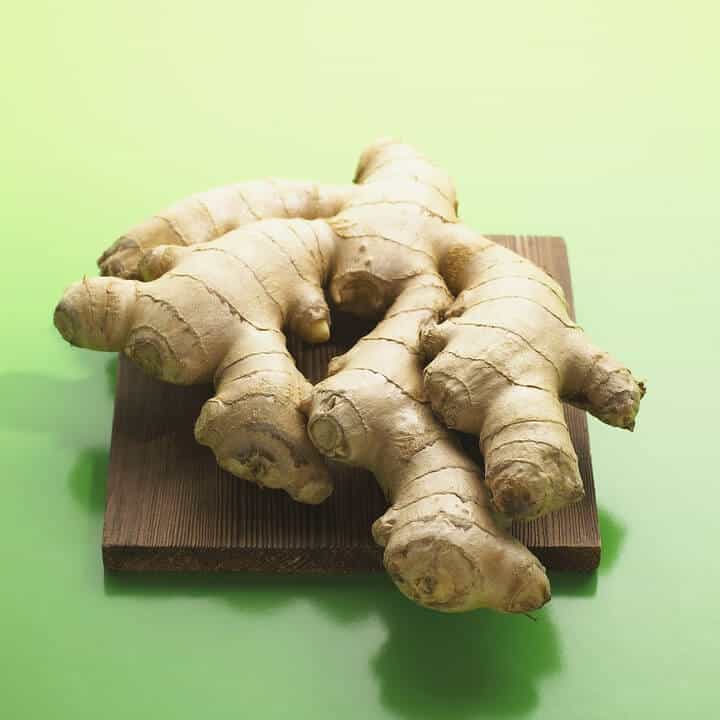
- When? during the spring, preferably at the beginning or during the first two months.
- Harvest time? From 4 months after sowing.
- How do we prepare the land? The ideal soil should be loamy and sandy, with good drainage and sufficient organic matter.
- How do we water? Ideal, drip irrigation. We will avoid flooding at all costs.
- How often do we water? Every day or every two days. Does not tolerate drought. It requires a lot of humidity.
- How do we sow? Step by step here.
- How do we harvest? Young ginger can be harvested 4 months after planting. Although you have to be careful, because its shell is very thin and, therefore, easy to hurt.
- Plagues and diseases? Nematodes, Erwinia sp. and Fusarium spp, Pythium graminicola.
Originating in Asia, ginger is a rhizomatous plant related to turmeric and cardamom.
It is famous in ancient medicine for itsanti-inflammatory powersand becausehelp fight, among other things, respiratory diseases, diabetes and a wide variety of digestive problems.
It is also used as a spice and is the main ingredient in many dishes and drinks.
You’ll find it very helpful to have a supply of fresh ginger on hand for when you need it.
Best of all, you caneasy to grow gingerand requires very little care.
When to grow ginger? The dates
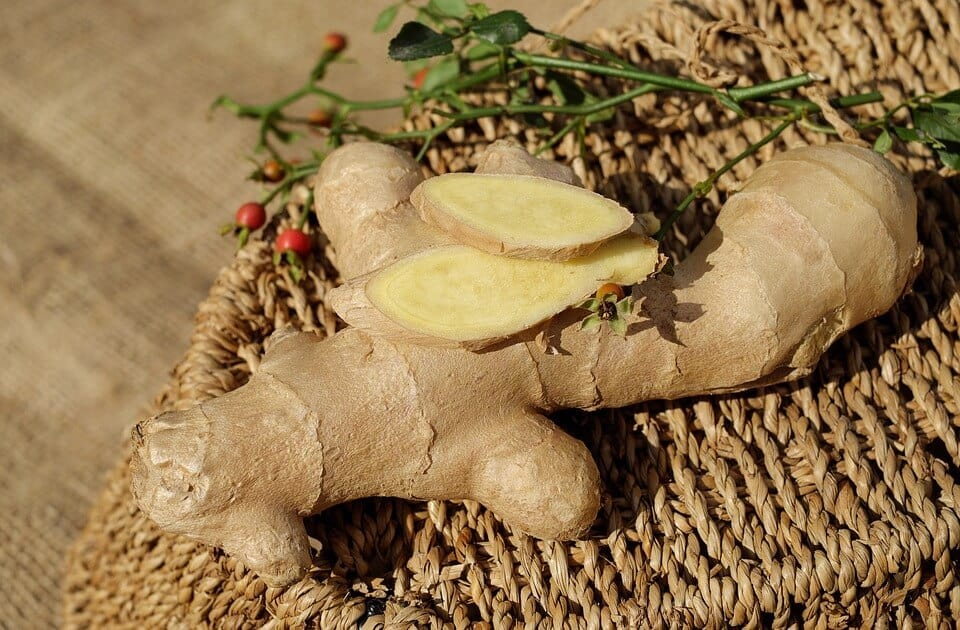 We want to plant gingerduring spring,preferably early or during the first two months.
We want to plant gingerduring spring,preferably early or during the first two months.
Harvest: after 4 months, some rhizomes can already be harvested.
Where to plant ginger? The temperature and the light
It is a tropical plant that proliferates with heat. It is not frost hardy, but does not tolerate direct sun either.
It is a plant that has adapted to live under the shade of tropical forest trees .
You can grow ginger in anot very bright areaor that receives direct sun very few hours a day.
In addition to preferring partial shade, it also does well in moist, but not muddy, soil.
The ideal temperature is between 25 and 30 ºC constant.
Temperatures below 10 ºC are detrimental to its development.
It also does not tolerate strong winds or droughts.
Recommendations:
- Plant after the last frost of spring.
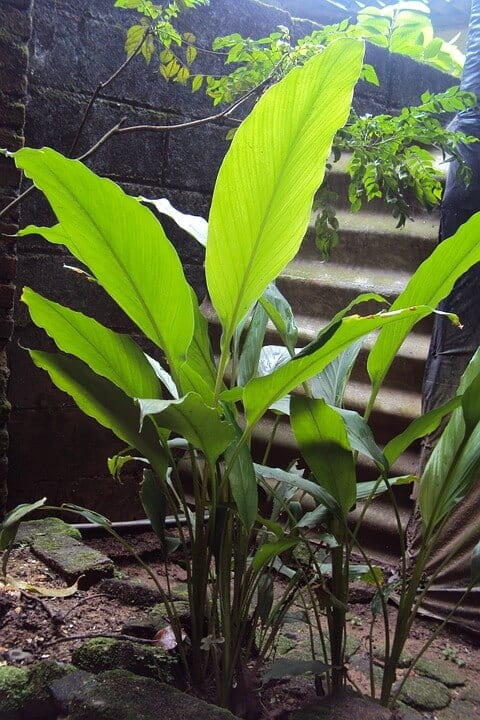
- One way to protect it from frost is to grow it in pots, indoors.
- To increase the temperature indoors you can make use of vine-type covers with double coating.
- Outdoors , try to plant ginger in sunny spots. You can also use thermal blankets if temperatures are very low.
- Take into account the particular conditions of the place where you live, since while ginger can grow in the shade in the tropics, in other latitudes, such places can be too cool.
How do we water ginger? Humidity
Gingerrequires high humiditythroughout its entire life cycle.
However, care must be taken that the soil has good drainage.
Excess moisture can cause root suffocation, rot, and certain fungal diseases.
The optimal relative humidity is between 60 and 70% during the day and between 70-90% at night.
It does not tolerate droughts, so a constant irrigation scheme must be maintained.
Recommendations:
- Preferably make drip irrigation to regulate the flow of water.
- The frequency of irrigation will depend on the particular conditions, however, you must always keep the soil moist,avoiding puddles.
- If you water in the morning, it is more likely that the crop will take longer to work, since the energy of the first hours is invested in evaporating the water from the surface of its leaves.
How do we prepare the land? the substrate
 The ideal soil should beloamy and sandy, with good drainage and sufficient organic matter. This type of flooring maintains heat and humidity more easily.
The ideal soil should beloamy and sandy, with good drainage and sufficient organic matter. This type of flooring maintains heat and humidity more easily.
It does not grow well in very compact or heavy soils, nor in very clayey ones.
Optimum pH is between 6.0 and 6.5
One of the peculiarities of ginger is that it is a plant that grows horizontally to the ground, so it fits very well in planters and pots.
Plant ginger in pots
If you are interested in growing it like this, the container should be at least40 cm deep and 30 cm in diameter.
Make sure the pot also has good drainage holes so the roots don’t get soggy.
You should place a small, very deep saucer under the pot to catch any water that drains out.
Recommendations:
- If the soil is very clayey, add organic matter. You can use worm castings. In this way you will also be favoring the good drainage of the land.
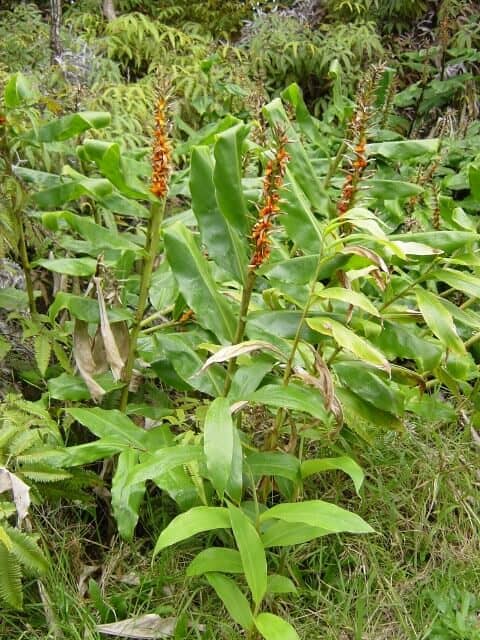
- Organic compost should be applied after the plants have sprouted and the soil has warmed up sufficiently. On the contrary, artificial fertilizers can be applied soon after planting the seeds.
- Dark compost is recommended to keep the soil moist and warm.
- If your garden is prone to flooding, you need to do everything you can to fix it. You can create slopes so that the water runs off to the side and install gutters to make it easier to collect the water.
- Another effective technique to promote drainage is to create mounds of soil and plant the ginger on them, so less water will accumulate at the foot of your plants.
How to plant ginger step by step [8 steps]
Step 1: Acquire a ginger rhizome
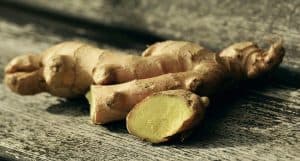 To grow ginger, you only need to make a cutting from the root of a ginger plant.
To grow ginger, you only need to make a cutting from the root of a ginger plant.
You can easily buy this at horticultural stores, nurseries or seed stores.
Likewise, if you know someone who grows ginger, you can ask them for a cut.
Make sure the rhizome is thick and its skin feels firm and cool to the touch. It is very important that it does not have any wrinkles, softness or mildew on its surface.
Preferably, get a rhizome with some green shoots.
Step 2: Cut the rhizome into pieces (OPTIONAL)
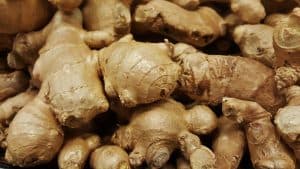 This is optional, only if you want to plant more than one plant.
This is optional, only if you want to plant more than one plant.
Cut your rhizome into several pieces between 3 and 4 centimeters each. After cutting them, let them sit in a dry place for a few days to allow them to heal.
You will notice that within a few days, each piece will develop a protective callus on the cut surface, which will reduce the risk of infection.
Step 3: Place the ginger rhizome in water (OPTIONAL)
If your root piece does not show any sprouts, place it in a container of room temperature water and leave it there overnight.
This will help stimulate their germination.
Step 4: Prepare the soil for planting ginger
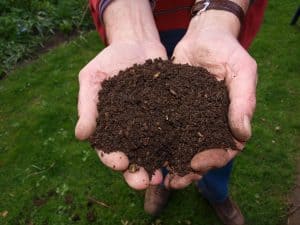 Fertilize the soil and moisten the ground before sowing to improve the quality of the substrate.
Fertilize the soil and moisten the ground before sowing to improve the quality of the substrate.
If you plant ginger in a pot, it is best to fill it with one part of compost or earthworm humus and three parts of organic soil.
Remember that the soil must be spongy and well aerated so that it can drain the water well.
Step 5 – Put your ginger rhizomes into the soil
Bury each piece horizontally to a depth of between 5 and 10 cm, ensuring that the shoots face upwards.
Keep in mind that each piece of ginger requires 20 centimeters of ground space.
Cover the root with soil, ensuring that the shoots are flush.
Step 6: Water the ground
Make sure to wet the soil with plenty of water, but avoiding waterlogging. Check the soil every day and water just before it dries out completely.
Do not overdo the risks. Remember that soil with too much water will rot the plants.
Step 7: Fertilize once a month
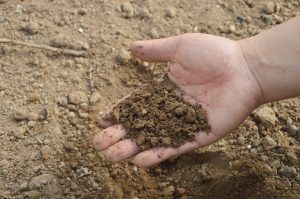 If the land where you have grown your ginger is poor or you simply want to improve its quality, enrich it with a small amount of fertilizer.
If the land where you have grown your ginger is poor or you simply want to improve its quality, enrich it with a small amount of fertilizer.
However, this is not necessary if the substrate is fertile.
Step 8: Be patient
Ginger grows slowly, especially in temperate climates.
You will see the first shoots three weeks after planting it. Make sure to water and keep your plant in good condition until this happens.
Once the ginger has sprouted, the mulch will keep it warm and help fight weed growth.
Mulch is also essential if the temperature of the soil falls below 10 ºC during the development period.
You will be able to harvest the ginger approximately four months after it has sprouted.
Ginger harvest and harvesting
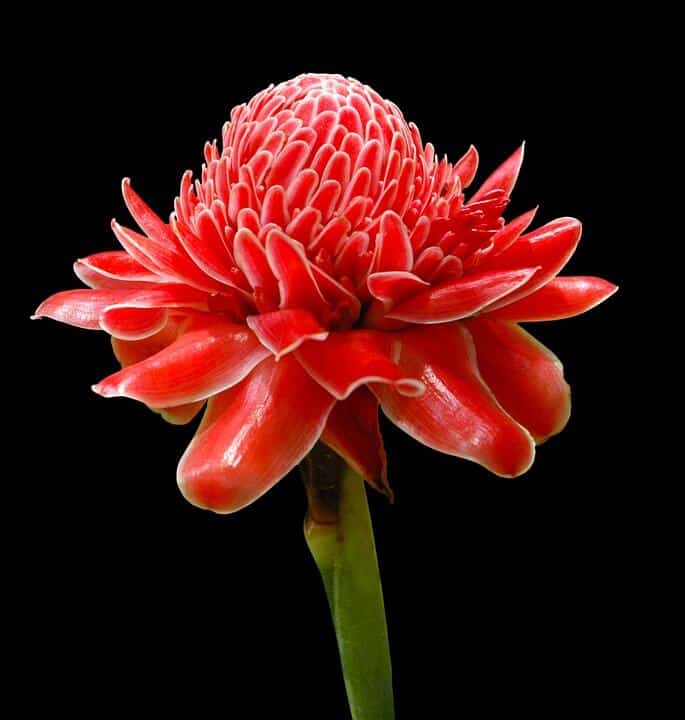 Let the plant mature before harvesting. Ginger develops a much stronger flavor if it is allowed to develop in the ground.
Let the plant mature before harvesting. Ginger develops a much stronger flavor if it is allowed to develop in the ground.
You will be able to notice the right moment whenthe leaves of the plant acquire a yellowish hue.
Once the stem dies (approximately 8 months after planting) stop watering the soil and dig up the ginger rhizome.
Cut the rhizomes with a sanitized knife.
After you have finished cutting, place the rhizomes back in the soil. Make sure they are completely covered in soil so they will continue to grow.
Young ginger can be harvested 4 months after planting. Although you have to be careful, because its shell is very thin and, therefore, easy to hurt.
Freshly cut ginger should be washed, dried in the shade, and stored in a cool, well-ventilated place.
Common pests and diseases
Ginger is vulnerable to some pests and diseases, especially if it is overwatered.
Erwinia sp. and Fusarium spp.
They arise due to an excess of humidity and poorly drained and poorly ventilated substrates. They damage the rhizome and the base of the stems.
The rhizome shows spots and malformations.
For its control, it is recommended to eliminate diseased plants, carry out proper management of the crop —fertilizer, irrigation, etc.— and carry out preventive treatments with copper – based products and antibiotics.
Pythium graminicola
The incidence of this fungus begins at ground level and spreads throughout the trunk causing rotting of the tissue.
It thrives in high humidity and in cool to warm temperatures, especially in late winter.
Chemical treatments are recommended for its control.
nematodes
Nematodes are small plant parasites found in the soil.
Their shape is like a worm and they can reach up to 2 mm depending on the species. These tiny parasites feed on ginger tubers.
To control them, we can plant garlic cloves as a repellent. It is also important to have a crop rotation and fertilize our soil.
They can also be treated with steam sterilization and solarization.
More information on ginger: types
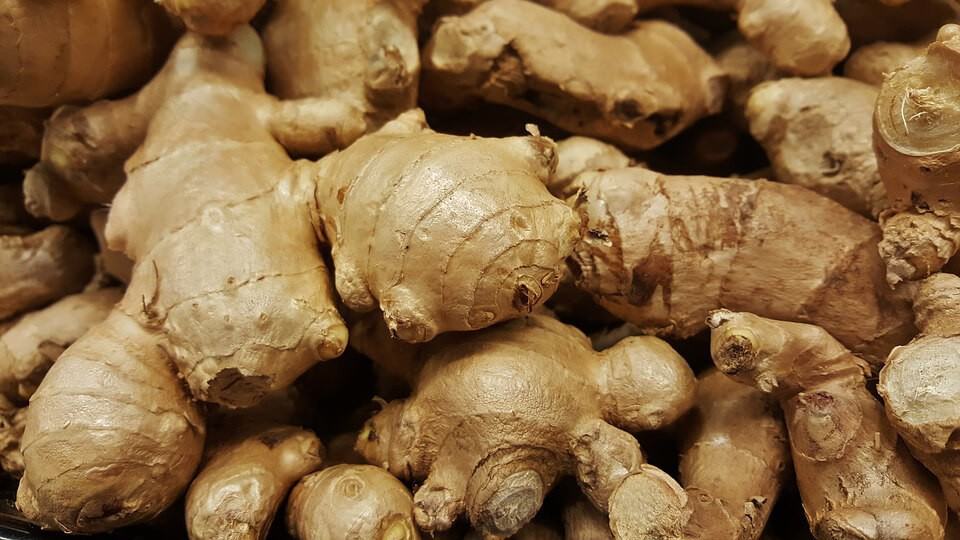 Etymologically, the word ginger comes from Indo-European and means «horn body».
Etymologically, the word ginger comes from Indo-European and means «horn body».
It is a plant of the Zingiberaceae family, whose underground stem is a horizontal rhizome, appreciated for its aroma and spicy flavor.
The plant grows to 90 cm tall, with elongated leaves up to 20 cm.
It can be found in all tropical regions of the world and to grow it, you basically only need water and patience.
The different varieties of ginger are mainly characterized by their flower arrangements, the size of the rhizomes and the shapes of the leaves.
In this way, some of the varieties that we can find are:
spiral ginger
 It is indigenous to the region of Southeast Asia. Its stems are similar to bamboo and form a circumference when twisted, hence its name.
It is indigenous to the region of Southeast Asia. Its stems are similar to bamboo and form a circumference when twisted, hence its name.
It can grow in a wide variety of climatic conditions and its flowers have a reddish hue.
The flowering season for spiral ginger is in the summer.
hidden ginger
It is so called because its flowers are hidden in the leaves.
It is a deciduous plant with branched rhizomes and green or multicolored leaves. It grows and reproduces very easily.
Zingiber
It has an upright stem and is characterized by its creamy yellow flowers.
The rhizomes of this plant are warty and branched. In addition, the tubers contain a milky substance that is used in the preparation of shampoos.
ginger butterfly lily
It gets its name because its flowers look exactly like the wings of a butterfly.
The height of this plant reaches 2 meters and it comes in a variety of shades such as orange, white, red and yellow.
You may also be interested in: How to grow Water Lilies.
Globba
It is characterized by its flowers, which hang from the stem. The leaves of this variety are long and the stems are short.
Its flowering season occurs in the month of July and continues until the fall. It grows in the shade and is very easy to grow.
Alpine
The stem of this variety resembles that of a banana tree and has leaves that appear bent.
Main benefits of ginger
- Reduces rheumatic and menstrual pain.
- Promotes expectoration and reduces sore throat.
- Helps improve blood flow.
- Prevents cramps.
- Eliminates dizziness and vertigo. Likewise, it reduces nausea.
- It is effective against the common cold.
- It is an antidepressant and natural.
- Reduces stress levels.
- Fights premature aging.
- Reduces migraines.
- Prevents colon and ovarian cancer.
- It facilitates digestion and reduces inflammation. In addition, it reduces flatulence.
- Activates digestive juices.
- It improves the absorption and assimilation of essential nutrients in the body.

![Photo of The Acacia Tree: [Characteristics, Sowing, Care, Irrigation and Substrate]](https://www.complete-gardening.com/wp-content/uploads/2021/06/acacia_1612789144-390x220.jpg)
![Photo of How to Plant Nasturtium in your Garden: [Complete Guide and Steps to Follow]](https://www.complete-gardening.com/wp-content/uploads/2022/08/how-to-plant-nasturtium-in-your-garden-complete-guide-and-steps-to-follow-390x220.jpg)
![Photo of How to Plant Macadamia Nuts in [8 Steps + Pictures]](https://www.complete-gardening.com/wp-content/uploads/2021/06/plantar-un-arbol-de-macadamia-390x220.png)
